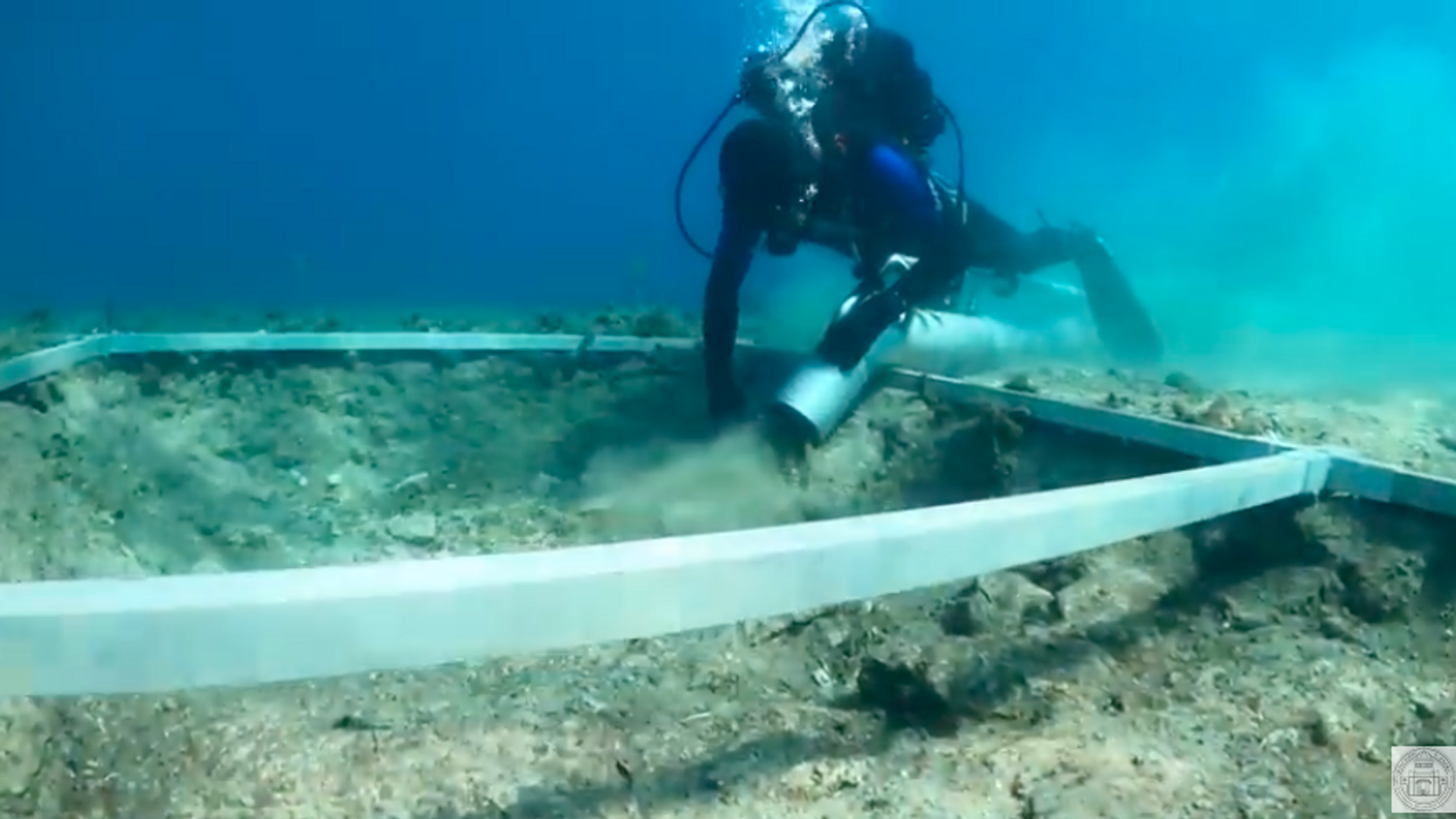https://sputniknews.in/20230510/7000-year-old-ancient-road-discovered-in-adriatic-sea-1892627.html
7,000-Year-Old Ancient Road Discovered in Adriatic Sea
7,000-Year-Old Ancient Road Discovered in Adriatic Sea
Sputnik India
The 15-feet-long road below the surface of the Bay of Gradina once served as a pathway between Korcula island in Croatian and sunken Soline island settlement on a man-made landmass.
2023-05-10T19:48+0530
2023-05-10T19:48+0530
2023-05-10T19:48+0530
eastern mediterranean
https://cdn1.img.sputniknews.in/img/07e7/05/0a/1896649_6:0:882:493_1920x0_80_0_0_78acb8a7a2851159b79d80dba7e6e522.png
In their latest discovery, archaeologists have unearthed the remnants of a 7,000-year-old road hidden beneath deep-sea layers of mud off the southern Croatian coast. The researchers and scientists from the University of Zadar’s Archeology Department also uncovered several other artifacts like flint blades, stone axes and fragments of millstones from the site.With radiocarbon analysis, the scientists figured out that the road, made up of carefully stacked stone slabs, belonged to a Neolithic settlement that was inhabited by the Hvar maritime culture around 5000 BC.The researchers from Croatia's University of Zadar posted a video on YouTube of the deep-sea expedition showcasing the new footage of the underwater “road” which is made of stacked stones that measure about 12 feet wide.Meanwhile, the researchers and scientists continue to fully excavate the Soline site.
eastern mediterranean
Sputnik India
feedback.hindi@sputniknews.com
+74956456601
MIA „Rossiya Segodnya“
2023
Sangeeta Yadav
https://cdn1.img.sputniknews.in/img/07e6/0c/0f/110602_0:0:641:640_100x100_80_0_0_c298016a79eb02ef8caa9d1f688c12a5.jpg
Sangeeta Yadav
https://cdn1.img.sputniknews.in/img/07e6/0c/0f/110602_0:0:641:640_100x100_80_0_0_c298016a79eb02ef8caa9d1f688c12a5.jpg
News
en_IN
Sputnik India
feedback.hindi@sputniknews.com
+74956456601
MIA „Rossiya Segodnya“
Sputnik India
feedback.hindi@sputniknews.com
+74956456601
MIA „Rossiya Segodnya“
Sangeeta Yadav
https://cdn1.img.sputniknews.in/img/07e6/0c/0f/110602_0:0:641:640_100x100_80_0_0_c298016a79eb02ef8caa9d1f688c12a5.jpg
discovery, archaeologists have unearthed the remnants, 7,000-year-old road hidden beneath deep sea mud discovered, southern croatian coast, university of zadar, archeology department, other artifacts like flint blades, stone axes, fragments of millstones, radiocarbon analysis, neolithic, hvar maritime culture, before christ era, croatia, university of zadar, underwater road,
discovery, archaeologists have unearthed the remnants, 7,000-year-old road hidden beneath deep sea mud discovered, southern croatian coast, university of zadar, archeology department, other artifacts like flint blades, stone axes, fragments of millstones, radiocarbon analysis, neolithic, hvar maritime culture, before christ era, croatia, university of zadar, underwater road,
7,000-Year-Old Ancient Road Discovered in Adriatic Sea
This newly-discovered prehistoric road was found 15 feet below the Bay of Gradina's surface, which once served as a passageway between Korcula Island in Croatia and the now-submerged Soline Island settlement on a man-made landmass.
In their latest discovery, archaeologists have unearthed the remnants of a 7,000-year-old road hidden beneath deep-sea layers of mud off the southern Croatian coast.
The researchers and scientists from the University of Zadar’s Archeology Department also uncovered several other artifacts like flint blades, stone axes and fragments of millstones from the site.
With radiocarbon analysis, the scientists figured out that the road, made up of carefully stacked stone slabs, belonged to a Neolithic settlement that was inhabited by the Hvar maritime culture around 5000 BC.
The researchers from Croatia's University of Zadar posted a video on YouTube of the deep-sea expedition showcasing the new footage of the underwater “road” which is made of stacked stones that measure about 12 feet wide.
Meanwhile, the researchers and scientists continue to fully excavate the Soline site.


